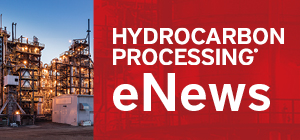Use submerged combustion systems to efficiently destroy hazardous plant waste
In the production of clean fuels, plastics and other hydrocarbon-based products, refineries and petrochemical facilities generate unwanted (waste) byproducts. Having no market value, the undesired byproducts must be recycled, minimized or eliminated. Depending on the feedstocks, end products and reactant materials, the unwanted materials can be gases, liquids or multiphase materials.
IP: 3.141.41.187
The Authors
Predatsch, E. - Selas-Linde North America, Blue Bell, Pennsylvania
Eric Predatsch is Selas-Linde’s Product Manager for oxidation technologies. His experience includes fired-equipment design, equipment startups, process simulations and supervision of Selas-Linde’s oxidation laboratory testing program. He previously worked at Dow Chemical in research and development. Mr. Predatsch holds a BS degree in chemical engineering from Villanova University.
Armstrong, P. - Selas-Linde North America, Houston, Texas
Peter Armstrong is the Vice President of business development for Selas-Linde, a wholly owned operating unit of Linde Engineering North America. He is responsible for driving strategic sales and market development in Selas Linde’s core technologies of LNG vaporization, thermal oxidation, ethylene furnaces, steam reformers and specialty heaters. Prior to Selas-Linde, Mr. Armstrong was Global Vice President of business development and marketing for HB Rentals, and served as Director of business development for KTI, a wholly owned subsidiary of TechnipFMC. Mr. Armstrong is on the board of the Rice E&C Global Forum and serves on the International Refining and Petrochemical Conference Advisory Board. He holds BS and BA degrees from Rockhurst University and an MBA from Washington University in St. Louis.
Related Articles
From the Archive








Comments